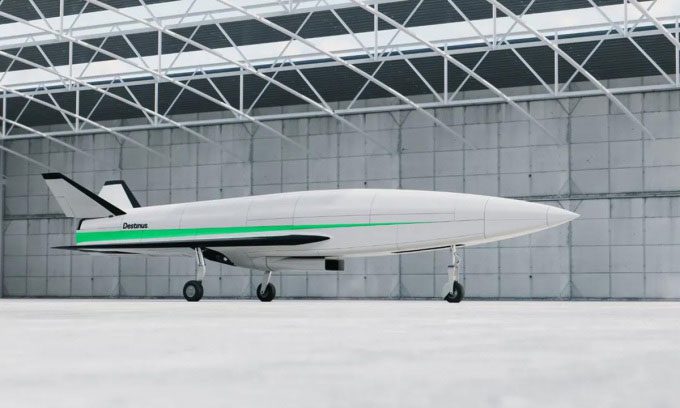European aerospace startup Destinus unveils the prototype of the hydrogen aircraft Destinus 3 at the Paris Air Show held from June 19 to 25.
Destinus aims to produce hydrogen-powered aircraft capable of transporting passengers between Frankfurt and Shanghai in under three hours, saving eight hours compared to traditional planes, Interesting Engineering reported on June 20. The most intriguing aspect of Destinus’s plan is the use of hydrogen as fuel, which eliminates concerns about emissions during transportation.

Prototype of Destinus 3. (Photo: Destinus).
Hydrogen was chosen as fuel due to its energy value, which is three times greater than that of conventional kerosene used in today’s aircraft. Furthermore, this fuel has excellent cooling capabilities, making it ideal for mixed-cycle engines. This type of engine includes a turbojet engine that can achieve subsonic and supersonic speeds. In addition, Destinus has designed a afterburner that provides extra thrust when needed.
Destinus plans to launch its first commercial aircraft powered entirely by hydrogen around 2030 to 2032. Named Destinus S, this aircraft is expected to carry 25 passengers and reach speeds of Mach 5 (five times the speed of sound), faster than the legendary Concorde supersonic aircraft.
About a decade later, Destinus intends to release the Destinus L, a larger version capable of carrying up to 400 passengers. This aircraft is expected to operate at Mach 6, powered by cryogenic hydrogen.
To date, Destinus has successfully conducted flight tests with its first prototype, Destinus 1, which is 4 meters long, also known as Jungfrau. Last October, the company tested the nearly 10-meter long Eiger aircraft at subsonic speeds. Last month, Destinus successfully tested afterburner technology using hydrogen fuel, which will also be equipped on the Destinus 3.
In addition to hydrogen fuel, Destinus will introduce a new autopilot system with the Destinus 3. Flights utilizing liquid hydrogen as fuel are expected to commence early next year. In the initial phase, Destinus will aim to conduct subsonic flights, progressing towards supersonic flights in the latter half of 2024.




















































